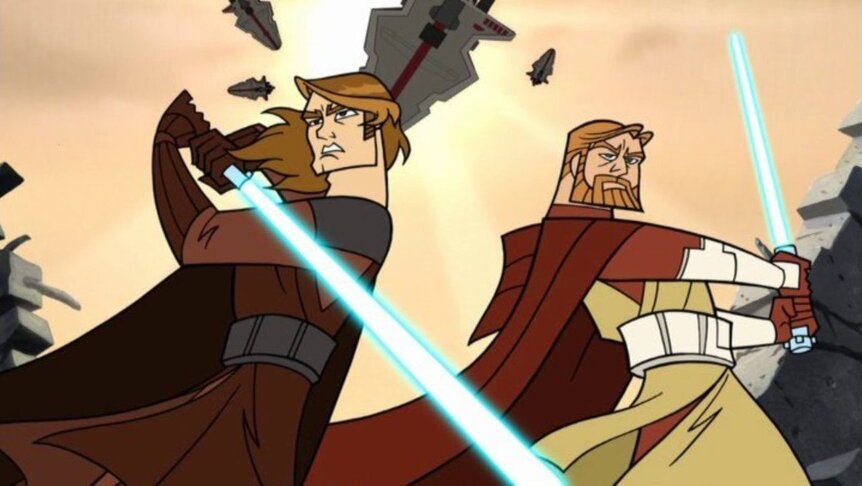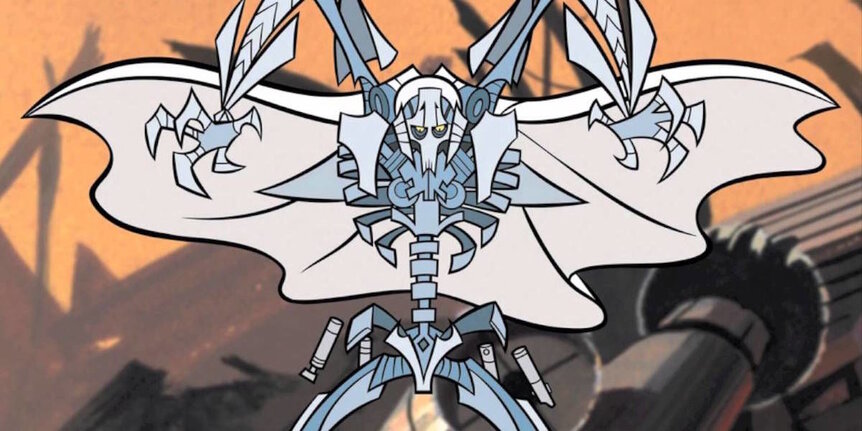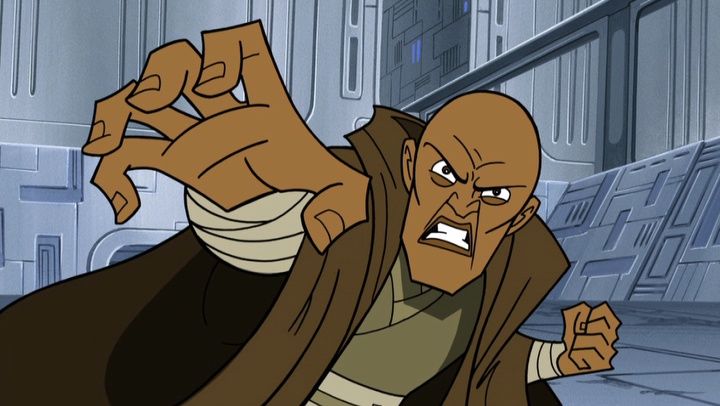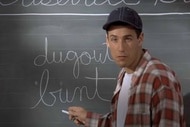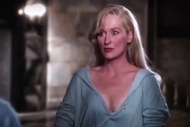Create a free profile to get unlimited access to exclusive videos, sweepstakes, and more!
Star Wars needs to acknowledge Genndy Tartakovsky’s Clone Wars once and for all
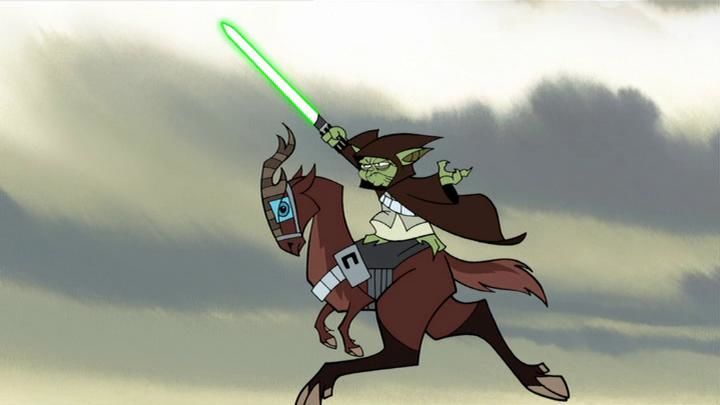
In 2014, Disney announced that the rich and robust Star Wars Expanded Universe — consisting of countless spin-off novels, video games, comic books, and toys that furthered the adventures of your favorite Star Wars characters while introducing dozens of new characters, planets, creatures, and droids — was effectively no more. The 2003 Genndy Tartakovsky-created Star Wars: Clone Wars micro-series, unlike anything Star Wars has seen before or since, was a part of that canon wipe.
Clone Wars and its Expanded Universe counterparts were relegated to a new designation, "Star Wars Legends," and a core group of Lucasfilm creatives, dubbed the Story Group, were tapped to oversee any new Star Wars material going forward to make sure they properly aligned with various future storytelling initiatives and, most importantly, didn't step on the toes of any other Star Wars project in development.
(In terms of preexisting properties, this left only the Star Wars theatrical feature films and the 2008 computer-animated series Star Wars: The Clone Wars — not to be confused with Clone Wars [2003] — as canon. "These stories are the immovable objects of Star Wars history, the characters and events to which all other tales must align," according to the official statement at the time.)
Since then, a number of elements from the Expanded Universe have found their way into Star Wars canon proper, like fan-favorite bad guy Grand Admiral Thrawn and various aspects of the Knights of the Old Republic game, including the Hammerhead Cruisers seen in Star Wars Rebels and Rogue One: A Star Wars Story. But Tartakovsky's Clone Wars micro-series, which was explicitly made to connect Star Wars: Attack of the Clones and Star Wars: Revenge of the Sith and features a number of hugely important moments for the characters (including Anakin's "knighting," when his Padawan braid is cut), remains adrift in space, beyond the Outer Rim.
Now, Clone Wars episodes are about as easy to find as Alderaan after its run-in with the Death Star.
Technically, Clone Wars is part of the Star Wars Legends, but for all intents and purposes, it's been completely erased by Disney and Lucasfilm. The two DVDs of the series are long out of print, and the show isn't available on Disney+. It may be considered "Legends," but at this point, it's damn close to being a campfire tale. And that needs to change.
Tartakovsky's Clone Wars is a stunning tour de force, featuring bold stylization and assured, intricately staged action. The first two batches of episodes, which aired in the fall of 2003 and spring of 2004, were each 3 minutes long, awkwardly squeezed into the regular Cartoon Network programming line-up. The third batch, which aired just before the release of Revenge of the Sith in spring 2005, were each 10 minutes long and were able to luxuriate slightly, mixing more character moments with the nonstop action.
Taking its cues from the galactic battles referenced in the original Star Wars and dramatized in the prequels, it gave depth to the Anakin/Obi-Wan relationship and showed how, "like fire across the galaxy, the Clone Wars spread," as Yoda so elegantly put it in the first episode. Aesthetically, it was important to Tartakovsky that he "create a style that spoke true to Star Wars but also had its own visual point of view."
"The thing that attracted me to it was it has a slight anime feel to it," George Lucas added at the time. "And I'm very interested in anime, and I was really interested [in] moving into a type of animation that was very different than anything we'd done in the past."
As the first Star Wars television series since the animated Ewoks show ran for one season in the mid-1980s, Clone Wars was rightly praised for the sophistication of its storytelling and design, winning two Emmys and further establishing Tartakovsky as a genius of his generation. At the time, Lucas was grooming Tartakovsky to become, in his words, "the John Lasseter of Lucasfilm Animation."
The arrangement fell through when, at the last minute, Lucas insisted Tartakovsky only work on Star Wars projects, killing a Viking-based feature film he had been developing. Tartakovsky left Lucasfilm and Lucas recruited Dave Filoni, a similarly action-oriented animator who had worked on the highly praised Avatar: The Last Airbender series. Together, Lucas and Filoni created their own series called The Clone Wars in 2008, this time utilizing 3D computer animation instead of the original series' traditional animation style.
And, looking at this new Clone Wars series, which just ended (for real, this time) on Disney+, you can get a sense of what it borrowed from Tartakovsky's project: the gruff characterizations of the Clone troopers, the push-and-pull interaction between Obi-Wan and Anakin, and the streamlined aesthetic. (Although, for the new series, Lucas instructed the designers that he wanted them to look like the marionettes from Thunderbirds. Seriously.)
By all accounts, Lucas was much more invested in this new series than he was Tartakovsky's, acting as a mentor to Filoni and guiding the various storylines and character arcs. But that shouldn't be enough to blacklist the original series, especially given its unique place in the franchise both as a direct lead-in to one of the films and a source of inspiration for filmmakers working in the Star Wars universe today.
At the time the last batch of shorts came out, Tartakovsky said that it was an edict from Lucas to "tie in directly to Episode III." And it's true — the closing moments of his Clone Wars could lead directly into Revenge of the Sith, from Palpatine getting abducted to Kenobi and Skywalker getting called into action (you even see the beginning of the epic battle that begins that movie). Tartakovsky even joked that the hour of new animation should play before screenings of Revenge of the Sith. (Animator Bryan Andrews said that Lucas told them, "We want you to animate the opening crawl.")
And in the years since, you can feel the influence of Tartakovsky's Clone Wars in everything from the battles and oversized mixture of humor and action in Rian Johnson's Star Wars: The Last Jedi to, most recently, the first live-action Star Wars series, Disney+'s The Mandalorian. Mandalorian creator Jon Favreau said that he based the action of the first Iron Man movie on Tartakovsky's Samurai Jack and even had Tartakovsky stage and shoot the climactic Iron Man 2 battle in the Japanese garden. Clearly, he's found inspiration from Tartakovsky in the past, and it's easy to see that he could be drawing from the same references here. The virtually wordless and very funny second episode of The Mandalorian ("The Child") feels particularly indebted to Tartakovsky's Clone Wars.
It's true that the 2008 The Clone Wars series has become a beloved, brilliantly sprawling part of Star Wars mythology, and its end is very sad for many fans the world over. But it shouldn't come at the cost of negating Tartakovsky's considerable accomplishment, or the silent influence he's had in other Star Wars stories. Maybe after the series finale, Disney will feel different about the micro-series that started it all and throw it up on Disney+. If anything, the company's direct-to-consumer streaming platform is big enough for all of the Clone Wars.
The views and opinions expressed in this article are the author's, and do not necessarily reflect those of SYFY WIRE, SYFY, or NBCUniversal.
